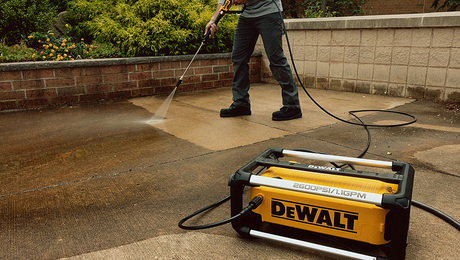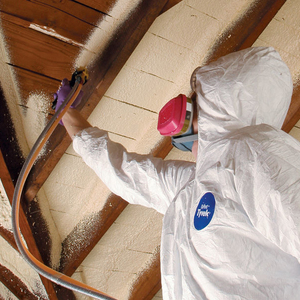Basement Slab Issues – mitigation options or repour?
I am currently having a home built and the basement slab has just been poured. The slab has multiple issues, both errors and general poor quality work. I’m looking for opinions on how serious the various issues are, whether mitigation options exist, and whether I should push for the entire slab to be torn up and replaced.
The construction – 2″ XPS 25psi foam board, polyethylene vapor barrier, 3.5-4 inch concrete. Planning for finished flooring over the slab – LVP, carpet, possibly engineered hardwood.
First issue – the poly is 4 mil, not 6 mil as specified (and code minimum…). My concern here is deterioration over time – haven’t found great information, but some suggests polyethylene loses about 1 micrometer per year. At this rate, 4 mil increases permeability past 0.1 (max recommended it seems?) in 25 years. 6 mil would have 75 years to reach that point. We are expecting to stay in this house for ~50 years. We’re not planning to install the finished flooring for at least a year, giving the slab time to dry. Can we then install some sort of vapor barrier above the slab? Liquid applied – epoxy, paint, sealer? Or poly under the flooring material?
Second – the floor is not flat. Noticeable variation across the whole slab, as well as fairly significant variation across small distances. Main concern here is how LVP will perform – thinking we’d have visible bumps/valleys, as well as noise from flexing at low spots. Mitigation options – grinding or self-leveling filler? Complexity of these options?
The slab was supposed to have fiber reinforcement. None exists. Also suspect concrete mix was a lot of water – based on the amount of uncontrolled cracks and unevenness of the slab. Slab was poured in high 80F, maybe low 90F temps, with similar temperatures the following days. No sprinkler, flooding, or any other type of water added. No burlap or poly over it. Based on everything else, I highly suspect there were no curing additives included in the mix.
Existing cracks can be filled with polyurethane, but I’m somewhat concerned about additional cracks developing after finished flooring is installed. How likely is this, if I’m waiting a year before installing finished floors?
Multiple pipe penetrations are completely cracked through the slab around the entire pipe, so it’s easy to wiggle those pipes.
Power screeding work seems to be poor quality – a lot of areas have concentric arcs, both visual and actual ridges. Multiple areas near pipe penetrations and walls have very significant excess concrete pushed up into ridges.
At the moment, I’m considering that the following would mitigate the issues in a reasonable way:
Grind floor flat
Chase existing cracks with grinding wheel and fill with polyurethane
Apply concrete densifier (to harden areas that were ground down)
At some point in the future, once the slab is dry, apply some sort of vapor barrier over the top of the slab.
Any thoughts or opinions would be most welcome!



















Replies
I've been a GC for 30 years. I use subs whose quality far exceeds minimums. That's
just the way I do things. Those same subs know if it isn't done right it gets redone.
I would tell the GC to have it torn out and done right. Hope you haven't made any payments yet, that's your leverage.
Thanks for the feedback. I've seen multiple other examples of this builder's work, and have discussed quality on several occasions - didn't have any concerns until now. Haven't paid for the slab work yet, so there is leverage. On principal, I agree with the tear out and redo properly approach. Practical matters - if I insist on tear out, we lose our place on the framer's schedule, pushing back completion an undetermined length of time. I also probably burn some of my ability to insist on fixes later in the build - not contract-wise, but I don't see a happy ending if the working relationship is dead.
Any thoughts on alternative solutions?
Been in the concrete construction industry for over 50 years. From what you state, seems like your concrete sub either was over his head with the specs you outlined OR was never properly made aware of those specs. If it were my house AND if I know that the concrete sub was fully aware of the specs up front, then it's a no-brainer do-over. Don't know your project's hierarchy and what the chain of 'command' was. If the responsibility of hiring and directing the concrete sub was in the hands of your overall (general) contractor, then that entity has the burden of making it right. How it gets done can be as simple as a do-over, or some middle ground. Grinding down a 3.5-4 inch slab to both level AND flat may not be possible without compromising its thickness (what is the elevation variance over the entire floor?). You may be able to achieve 'flat' but never really achieve 'level.' An alternative (if ceiling height isn't critical) would be to put the 6 mil poly over the existing slab and then place a 4" minimum slab on top of it. Seal the perimeter of the poly to the walls.
[CT construction (structural) engineer]
In over his head is likely - apparently the concrete crew has been taken recently taken over by a son after the father retired.
Like I described in my other comment, I don't think a full tear-out and re-pour is going to be feasible from an overall project standpoint. However, if there is no possibility of being able to mitigate the issues, I may have to insist.
Grinding seems like a reasonable option - level isn't critical to me, and flat seems possible without removing a huge amount. Other than the thickness reduction, anything else I'd have to worry about/deal with on this approach?
Adding a layer of poly on top of the existing slab - what does this do to the ability of the existing slab to dry, since it would then be sandwiched with poly on both sides? I'm reading about self-leveling topping products, but those seem like they need direct contact with the existing concrete. Layer thickness on those looks to be less than 4". For any option that includes adding an additional layer, there may be complicating factors, depending on how fast the framers work:
-Existence of steel columns between the slab and beams for the first floor (adjustable foot style, additional layer would cover the flat plate foot)
-Some basement exterior walls are built at slab level - walkout basement. Could only pour a layer up to 1.5" before getting higher than the treated sill plate.
Any thoughts on whether those mitigation options result in a basement slab that will be satisfactory (but still not technically correct per specs/contract)?
"Any thoughts or opinions would be most welcome!"
You know what 'opinions' can be like...
"Other than the thickness reduction, anything else I'd have to worry about/deal with on this approach?"
Exactly that - the thickness reduction. Was the subbase actually carefully placed and level/to proper grade? How do you know how thick the slab actually is?
Cracks you see now are likely due to early age shrinkage - they are going to continue to propagate for at least a year after placing.
Concern about moisture migration up from below the slab is valid and can become on ongoing issue depending on ground moisture presence. Was the poly adequately sealed at the joints and edges?
Epoxy coating the slab is likely not a good idea - it may lift over time or not cure properly.
As I mentioned previously, a full do-over would be best.
Next best - consider the existing slab nothing more than the base material and cast a new slab (properly placed, correct mix proportions, accurately jointed to manage the inevitable shrinkage) over it.
"Adding a layer of poly on top of the existing slab - what does this do to the ability of the existing slab to dry, since it would then be sandwiched with poly on both sides?"
Doesn't really matter because you're considering it to be base material.
"Existence of steel columns between the slab and beams for the first floor (adjustable foot style, additional layer would cover the flat plate foot)"
Sounds like the framers are already at work. Do the columns have the screw adjustment at the bottom? Perhaps they can be inverted to put the screw adjustment at the top. Very often I see lally columns whose bases are fully encapsulated by the floor slab concrete. Not a problem until they rust to the point of requiring replacement (seen that as well).
"Could only pour a layer up to 1.5" before getting higher than the treated sill plate."
I believed this to be a basement floor slab - what sill plates would exist?
Can't see the job from my vantage point so there's not much more I can offer.
Picture attached shows the treated plate I was referring to. Looks like my terminology was wrong - bottom plate. I think this rules out adding another 4" slab. Any experience with overlay/topping products, such as these from Ardex? https://www.ardexamericas.com/products/ardex-surfaces/
Seems like something like that would at least result in a flat and level floor, which is the most immediate problem.
I certainly agree about "opinions" - but definitely consider thoughts from qualified individuals to be worthwhile. Thanks again!
Looks like you probably have a walk-out basement.
I'm involved in foundation replacements for multiple 6-unit condo buildings. The longitudinal center bearing wall's (wood stud wall) bottom plate was attached directly to a strip footing and the the floor slab was cast on top of the footing against flashing that ran about 6" up the studs. 40 years later (original construction was early 1980s) all seemed good, although it's not a detail I would prefer. My concern is that it provides a 'pocket' for water to collect if the basement were to get flooded. Much to my chagrin the replacement foundation is being constructed in the same manner.
My concern with products like you mention is ensuring a good bond to the existing slab AND then having to mitigate any cracks that telegraph up thru the topping (they will eventually). Rather than grinding I would shot-blast the floor, then thoroughly clean it. Follow the manufacturer's instructions to the letter for the topping material.
I think I can picture the detail you describe, with the flashing holding back the slab from the wood structure. Fascinating stuff, the history of building techniques.
I'm figuring at least a year between any slab fixes and finished flooring, so I suppose I can seal any cracks that migrate through.
Thanks for the additional feedback, I think I've got a reasonable direction now.
Bulrush - I'm sorry to hear about the problem. It's frustrating that even with the specifications spelled out the requirements weren't followed. I wonder if the floor finishers were experienced with placing concrete over plastic. It can be a tricky process especially if additional water is added. That water has to bleed and dry off the top instead of draining through the bottom into the soil beneath. Excess water makes finishing more time consuming and difficult. That's not to give the concrete crew an excuse - they and the builder should have known what the precautions are and skill needed for a successful job.
You may have already moved forward with one of the ideas others presented. I just wanted to throw a couple thoughts out there.
I don't think the 4 mil poly will deteriorate and lose its effectiveness. I installed 6 mil poly on the walls of a permanent wood foundation 40 + years ago and though it is thicker than the 4 mil it is subject to a lot more weather extremes. Well below freezing in winter and 90F+ in summer, lots of water due to lack of gutters, soil critters and treated lumber. When I dug nearby last summer and exposed it along a 4 ft deep section of wall it appeared in near perfect condition. Since you have the 2 in of XPS (0.55 perms) beneath it I think there will be minimal deterioration of the 4 mil and vapor transmission through the foam and plastic sandwich will be slight. The small amount that does make it through can be handled with ventilation.
If the concrete finishers did water down the concrete a lot (and it sounds like they did if there are already shinkage cracks) - the current cracks will continue to get worse and more will likely develop. Any leveling finish will telegraph the same cracks and that may be a problem for the floor finish (LVT, engineered wood). Another option to provide a good base for the LVT or other engineered flooring is to overlay the slab with two layers of Advantech sheathing screwed together. A layer of self-leveling concrete surfacing can be applied to the concrete to provide a flat surface to support the sheathing.